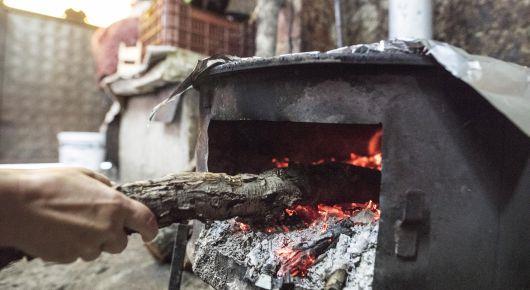Wood energy video hits viewer record as “winter is coming”

As the dragon-featuring hit series Game of Thrones has shown, knowing how to grow and tend sources of fire can be highly empowering, especially when winter is coming. Equally, misuse of the source can have destructive effects on people and ecosystems.
While many people living in the eastern part of the United Nations Economic Commission for Europe (UNECE) region use wood instead of dragons as a source of fire, the same principles hold true. The video More heat with less wood contains a range of useful tips for those who use wood energy for heating and cooking. The educational video produced by the joint UNECE/FAO’s Forestry and Timber Section has been viewed over 100 000 times – making “winter is coming” the Organization’s most successful video to date.
Knowledge of the best types of wood and how to burn them can make their use more energy- and cost-efficient and mitigate air pollution and harmful emissions.
The amount of energy gained from a piece of wood can be increased at every step of the process. For example, letting a piece of beech wood dry for a year before burning it nearly doubles the wood’s kWh/kg. Moreover, the type of oven used to burn the wood impacts the level of energy extracted. While a traditional oven transforms 20 percent of the wood’s energy to heat, a modern oven can extract over 90 percent.
Once the heat is produced, insulated ceilings, walls, and windows can contribute to ensuring optimum, long-lasting effects by trapping the heat inside the building. The CO2 emissions that eventually do leave the building via a chimney are re-absorbed by growing trees, thereby providing wood energy in the future. This process completes the carbon cycle and contributes to Sustainable Development Goal 7, which aims to “ensure access to affordable, reliable, sustainable, and modern energy for all.”
In fact, FAO Assistant Director-General Hiroto Mitsugi highlights that “wood energy continues to be the leading renewable energy source in Europe, accounting for about 45 percent of primary energy from renewable sources.”
Having implemented all of the above steps to gain maximum benefits from wood energy, the only thing left to do this winter is to get cosy in a toasty home and start watching the next hit TV series. Until then, the video More heat with less wood can be found in English (with Russian subtitles). The video is also available in Albanian, Georgian, and Turkish. Additionally, we invite anyone interested in more recent data to consult the publication Wood energy in the UNECE region.
29 October 2019, Geneva, Switzerland
